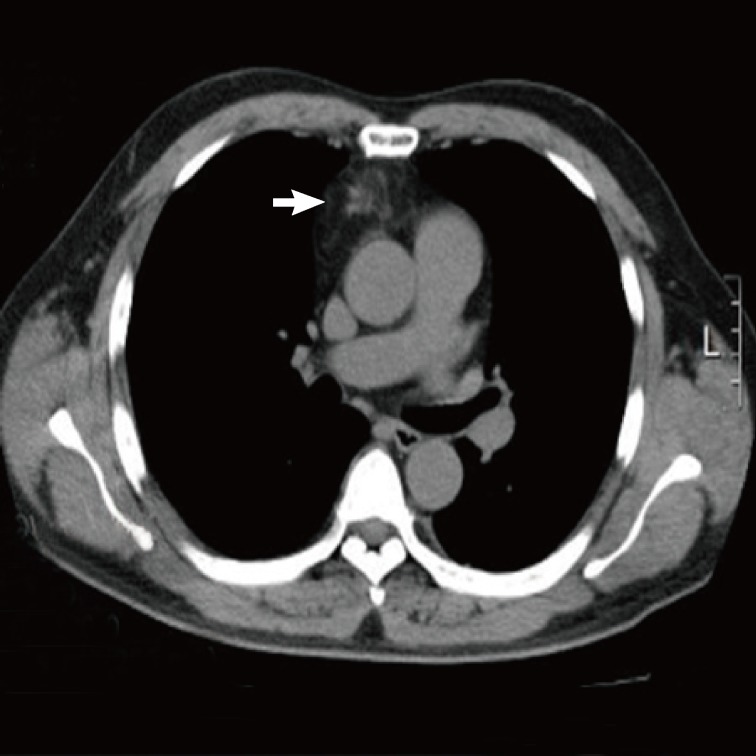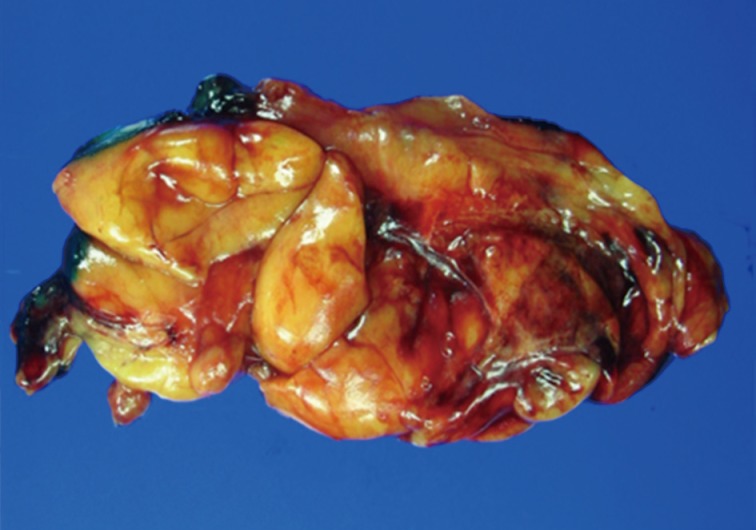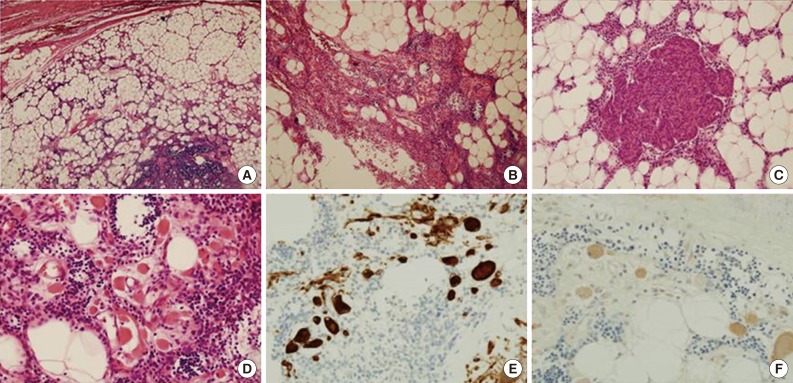Articles
- Page Path
- HOME > J Pathol Transl Med > Volume 47(6); 2013 > Article
-
Brief Case Report
Mediastinal Thymolipoma with Striated Myoid Cells: Report of a Peculiar Case - Young Keum Kim, Nari Shin, Won Young Park, Do Youn Park, Gi Young Huh, Chang Hun Lee
-
Korean Journal of Pathology 2013;47(6):596-598.
DOI: https://doi.org/10.4132/KoreanJPathol.2013.47.6.596
Published online: December 24, 2013
Department of Pathology, Pusan National University School of Medicine, Yangsan, Korea.
- Corresponding Author: Chang Hun Lee, M.D. Department of Pathology, Pusan National University Hospital, Pusan National University School of Medicine, 179 Gudeok-ro, Seo-gu, Busan 602-739, Korea. Tel: +82-51-240-7422, Fax: +82-51-242-7422, cnlee@pusan.ac.kr
• Received: January 19, 2013 • Revised: March 18, 2013 • Accepted: March 29, 2013
© 2013 The Korean Society of Pathologists/The Korean Society for Cytopathology
This is an Open Access article distributed under the terms of the Creative Commons Attribution Non-Commercial License (http://creativecommons.org/licenses/by-nc/3.0/) which permits unrestricted non-commercial use, distribution, and reproduction in any medium, provided the original work is properly cited.
Figure & Data
References
Citations
Citations to this article as recorded by 

- Thymoangiolipoma: A rare histologic variant of thymolipoma in a patient with myasthenia gravis
Mohammad Hossein Anbardar, Fatemeh Amirmoezi, Armin Amirian
Rare Tumors.2020;[Epub] CrossRef - Thymic epithelial neoplasms with rhabdomyomatous component: a clinicopathological and immunohistochemical study of 7 cases
Neda Kalhor, Cesar A. Moran
Human Pathology.2019; 83: 100. CrossRef
 PubReader
PubReader ePub Link
ePub Link-
 Cite this Article
Cite this Article
- Cite this Article
-
- Close
- Download Citation
- Close
- Figure
Mediastinal Thymolipoma with Striated Myoid Cells: Report of a Peculiar Case



Fig. 1 A computed tomography scan of the chest demonstrates a large mediastinal mass (white arrow) consisting of a mixture of fat and soft tissue contents and suggesting thymolipoma.
Fig. 2 Grossly, the mass is a fairly well-circumscribed, soft, yellow fatty tumor with a focal solid area, measuring 12.0×10.0×3.5 cm.
Fig. 3 (A) The mass shows abundant mature adipose tissue admixed with areas containing remnants of thymic tissue. (B, C) The thymic tissue component varies from strands of atrophic thymic epithelium to large areas containing thymic parenchyma with medullary epithelial hyperplasia. (D) The tumor shows a frequent occurrence of polygonal striated myoid cells. (E, F) Myoid cells are immunoreactive for desmin (E) and myoglobin (F).
Fig. 1
Fig. 2
Fig. 3
Mediastinal Thymolipoma with Striated Myoid Cells: Report of a Peculiar Case

 E-submission
E-submission








